Bernardo Strozzi stands as one of the most significant and vibrant painters of the Italian Baroque period. Born in Genoa in 1581 and passing away in Venice in 1644, his life and art bridged two major artistic centers, absorbing and transforming influences to create a style uniquely his own. Known for his rich color palette, energetic brushwork, and profound emotional depth, Strozzi navigated a complex path between religious devotion and secular artistic ambition. His journey from a Capuchin friar to a celebrated master in Venice resulted in a body of work that remains compelling for its fusion of earthy realism and spiritual intensity, leaving an indelible mark on the art of 17th-century Italy.
Early Life and Genoese Formation
Bernardo Strozzi entered the world in Genoa, a bustling maritime republic with a rich artistic heritage. His initial artistic training began around 1595, placing him in the workshops of several masters. Primary among these were Pietro Sorri, a Sienese painter working in Genoa between 1596 and 1598, whose influence likely imparted elements of late Mannerism and Tuscan design principles. He also studied with Cesare Corte, a local Genoese artist, grounding him in the regional traditions. This early education exposed Strozzi to diverse stylistic currents prevalent in Liguria at the turn of the century.
However, Strozzi's path took a significant turn away from a conventional artistic career. Around the age of 17, in 1598, he felt a strong religious calling and joined the Capuchin Order, a reform branch of the Franciscans known for their austerity and commitment to poverty. This decision deeply impacted his identity and public persona. For over a decade, he lived as Fra Bernardo, dedicating himself to religious life within the monastery of San Barnaba. His artistic talents were not entirely suppressed; he likely created devotional works for his order during this period, though few survive.
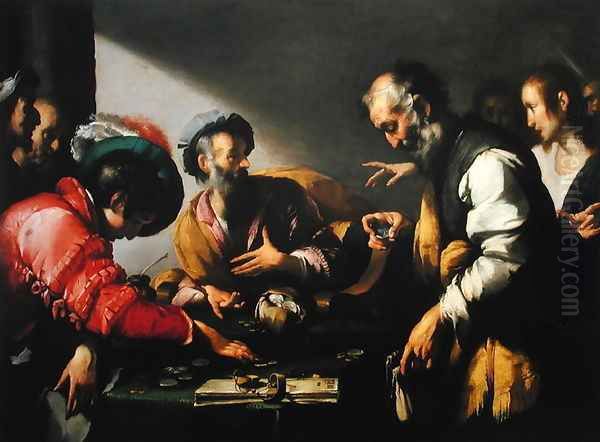
His monastic life earned him the enduring nicknames "Il Cappuccino" (The Capuchin) and later, more broadly, "Il Prete Genovese" (The Genoese Priest), titles that followed him even after he re-entered secular life. These names underscore the unusual duality of his identity – a man of God who became a master of the often worldly art of Baroque painting. This period of spiritual discipline may have contributed to the emotional weight and sincerity found even in his later, more flamboyant works.
The Capuchin Years and Departure
Strozzi's commitment to the Capuchin order was profound, but circumstances eventually drew him back into the secular world. Around 1608 or 1610, following the death of his father, Strozzi sought permission to leave the monastery temporarily to care for his unmarried mother and sister. He was granted permission to live outside the cloister as a tertiary priest, supporting his family through his painting, which quickly gained recognition in Genoa. This period marked the true beginning of his professional career as a painter outside the confines of the monastery.
His success grew rapidly. He received commissions for altarpieces, private devotional paintings, and increasingly, portraits and genre scenes. However, his status remained ambiguous. He was technically still bound by his vows to the Capuchin order. As his fame increased and his lifestyle perhaps became more independent than deemed appropriate for a friar, tensions arose with his religious superiors. The exact nature of the conflict is debated, but it culminated dramatically.
After his mother's death around 1630, the Capuchins expected Strozzi to return to the monastery. He refused. The situation escalated, and according to some accounts, charges were brought against him, possibly related to practicing painting in a manner deemed incompatible with his vows, or perhaps the more specific, though less substantiated, accusation of practicing medicine illegally. Whatever the precise charge, Strozzi was imprisoned in Genoa. This dramatic episode concluded with his escape, likely facilitated by influential friends or patrons. Seeking refuge and greater artistic freedom, he fled his native city around 1630 or 1631 and made his way to Venice.
Genoese Maturity: Style and Influences
During his years working in Genoa after leaving the monastery but before his flight to Venice (roughly 1610-1630), Strozzi developed a powerful and distinctive style. This period saw him absorb and synthesize various potent influences circulating in the vibrant artistic environment of Genoa. The city, a wealthy port, attracted artists and artworks from across Europe, creating a fertile ground for stylistic exchange.
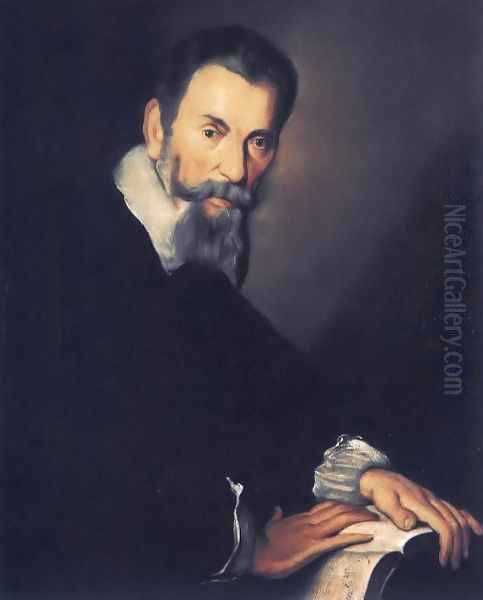
One of the most significant, though perhaps indirect, influences was Michelangelo Merisi da Caravaggio. While Caravaggio himself spent little time in Genoa, his revolutionary naturalism and dramatic use of chiaroscuro (strong contrasts of light and dark) had a profound impact throughout Italy. Strozzi embraced this tenebrism in his early works, using stark lighting to heighten emotional intensity and create a sense of palpable reality, particularly in his religious scenes. Works like his early Ecstasy of St. Francis clearly show this Caravaggesque leaning.
Equally important was the influence of Flemish masters. Peter Paul Rubens visited Genoa in the early 17th century, leaving behind stunning portraits and altarpieces that dazzled local artists with their vibrant color, dynamic compositions, and rich textures. Anthony van Dyck spent a longer period in the city (1621-1627), becoming the favored portraitist of the Genoese aristocracy. Strozzi undoubtedly studied the works of both Flemish giants. From them, he absorbed a love for opulent color, a more fluid and energetic brushstroke, and a sophisticated approach to texture, particularly in rendering fabrics and flesh. His style began to move away from the starkness of Caravaggism towards a richer, more painterly approach.
Strozzi was not working in isolation. Genoa had its own school of talented painters during this period. He would have been aware of the work of elder masters like Giovanni Battista Paggi and Bernardo Castello, as well as contemporaries such as Domenico Fiasella, Gioacchino Assereto, and Orazio De Ferrari. While distinct, these artists shared a certain Genoese robustness and interest in dynamic narrative that also characterizes Strozzi's work from this time. His style became a unique blend: the dramatic realism of Caravaggio tempered by the color and painterliness of the Flemish, all infused with a distinctly Genoese energy.
Key Genoese Works and Patrons
Strozzi's Genoese period was highly productive, establishing his reputation and securing him important commissions. He catered to a diverse clientele, including religious orders, aristocratic families, and private citizens. His versatility was evident early on, as he excelled in various genres.
Among his most celebrated Genoese works is The Cook (also known as La Cuoca or Kitchen Maid Plucking a Goose), likely painted in the mid-1620s. This painting exemplifies his burgeoning interest in genre scenes, depicting a robust kitchen maid surrounded by game birds and copper pots. It showcases his mastery of still-life elements, his rich, earthy palette, and his ability to imbue a mundane scene with monumental presence and a palpable sense of life. The work combines Flemish influences in its detailed realism with a Caravaggesque lighting scheme.
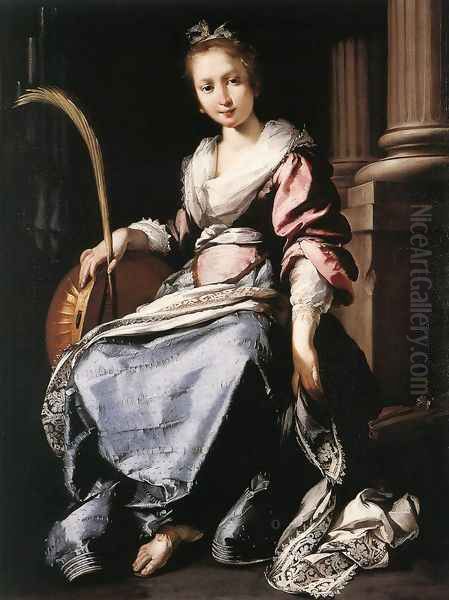
Religious commissions remained central to his output. He painted numerous altarpieces and devotional works. An early example reflecting Caravaggesque influence is the Calling of St. Matthew. He also undertook significant fresco projects, most notably the decoration of the choir of the church of San Domenico, commissioned by prominent members of the Doria family, Giovanni Carlo and his cousin Giovanni Stefano. Although these frescoes were tragically destroyed in the 19th century, preparatory drawings and contemporary accounts attest to their importance and ambition, solidifying Strozzi's position among Genoa's leading artists.
Portraiture was another area where Strozzi excelled. He captured the likenesses of Genoese nobles and clergymen, often employing the rich textures and psychological insight admired in the portraits of Van Dyck, yet with his own characteristic vigor and robust handling of paint. His patrons during this period included some of Genoa's most powerful families, such as the Doria, Centurione, and Spinola clans. Their support was crucial in sustaining his career after he left the monastery and before his departure for Venice. These Genoese works laid the foundation for his later fame, demonstrating his technical skill, his evolving style, and his ability to connect with patrons across different social strata.
Transition to Venice
The decision to leave Genoa for Venice around 1630/1631 marked a pivotal moment in Strozzi's life and career. Forced to flee due to the conflict with the Capuchin authorities and his subsequent imprisonment and escape, Venice offered not only sanctuary but also unparalleled artistic opportunities. La Serenissima, as Venice was known, possessed a legendary artistic heritage and remained a vibrant center for painting, attracting artists from all over Europe.
For a painter like Strozzi, whose style was increasingly characterized by rich color and expressive brushwork, Venice was a natural destination. The city was steeped in the tradition of the great Venetian colorists of the 16th century – Titian, Tintoretto, and Paolo Veronese. Their legacy permeated the city's churches, palaces, and Scuole (confraternities), providing an inspiring environment for any artist sensitive to color and light. While Venetian painting had arguably lost some of its innovative edge by the early 17th century, it was ripe for revitalization.
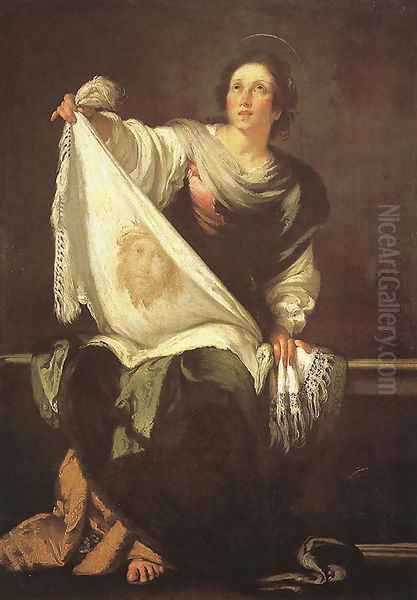
Strozzi arrived in Venice as a mature artist with a well-established reputation, albeit one slightly complicated by his past. He quickly integrated into the Venetian art scene. The city's atmosphere, with its luminous light reflected off the canals and its tradition of painterly freedom (colorito over disegno), seemed to resonate deeply with his artistic temperament. His arrival, along with that of two other significant non-Venetian painters around the same time – Domenico Fetti from Rome via Mantua, and the German-born Johann Liss (also known as Jan Lys) – is often credited with injecting new energy into Venetian painting and laying the groundwork for the Venetian Baroque and later Rococo styles.
Venetian Flourishing: Style Evolution
Once established in Venice, Strozzi's art underwent a noticeable transformation, absorbing the city's unique artistic atmosphere while retaining the vigor of his Genoese roots. His palette brightened considerably, moving away from the darker tones of his earlier Caravaggesque phase towards the warmer, more luminous hues characteristic of the Venetian school. The influence of the 16th-century masters became more pronounced.
He clearly studied the works of Paolo Veronese, whose grand decorative schemes, silvery light, and opulent textures find echoes in Strozzi's Venetian compositions. The dramatic energy and bold brushwork of Tintoretto also seem to have resonated with him. Perhaps most importantly, the rich, sensuous color and masterful handling of paint associated with Titian informed Strozzi's mature style. He developed a looser, more fluid brushstroke, often applying paint in thick impasto, creating surfaces that are vibrant and texturally rich. This technique, known as pittura di tocco (painting of touch), emphasized the physical presence of the paint itself and contributed to the overall dynamism of his work.
While embracing Venetian traditions, Strozzi did not simply imitate. He fused these influences with the robust realism and emotional directness that characterized his Genoese work. The result was a powerful, personal style that was both decorative and deeply felt. He became a leading figure in the Venetian art world, recognized for his ability to work on a grand scale and his mastery of color.
His presence, alongside Fetti and Liss, helped redefine Venetian painting in the second quarter of the 17th century. These three artists, all outsiders who chose to work in Venice, brought fresh perspectives and techniques, revitalizing the local school. They paved the way for later Venetian Baroque and Rococo masters like Sebastiano Ricci, Giovanni Battista Piazzetta, and ultimately Giovanni Battista Tiepolo, who would build upon the foundations they helped establish. Strozzi, in particular, became celebrated for his synthesis of Genoese energy and Venetian color.
Major Venetian Commissions and Works
In Venice, Strozzi received numerous prestigious commissions, further cementing his reputation as a leading master. He painted altarpieces for prominent churches, decorative canvases for palaces and public buildings, and portraits of notable figures, including the Doge himself.
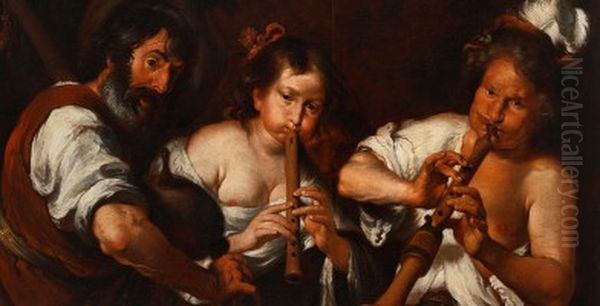
One of his most important Venetian commissions was for the church of San Nicolò da Tolentino, where he painted several works, including the impressive St. Lawrence Distributing the Goods of the Church (also known as St. Lawrence Distributing Alms). This large canvas exemplifies his mature Venetian style, showcasing brilliant color, dynamic composition, and expressive figures. The depiction of the saint amidst the poor is both monumental and deeply human, rendered with energetic brushwork and a rich palette dominated by reds, golds, and blues.
He also contributed works to the decoration of the Biblioteca Marciana (Marciana Library) and the Scuola Grande di San Giovanni Evangelista. His paintings for the Church of the Incurabili, particularly scenes from the life of St. Sebastian, were also highly regarded. These public commissions demonstrated his ability to handle large-scale narrative compositions suitable for prominent locations.
Strozzi continued to excel in portraiture. His portrait of the celebrated composer Claudio Monteverdi, maestro di cappella of St. Mark's Basilica, is perhaps his most famous. Painted around 1630, it captures the musician's intense gaze and intellectual presence with remarkable sensitivity. This portrait not only documented a key figure of the era but also likely helped Strozzi gain entry into Venice's elite cultural circles. He also painted a commanding portrait of Doge Francesco Erizzo, showcasing his ability to convey status and authority through rich attire and confident pose.
Other notable works from his Venetian period include the Parable of the Wedding Guest, demonstrating his skill in multi-figure compositions and narrative clarity, and allegorical subjects like the Allegory of Fame and the Allegory of the Arts (Hermitage Museum, St. Petersburg). Religious works remained central, with paintings like St. Cecilia (Nelson-Atkins Museum of Art), St. Veronica (Prado Museum, Madrid), and various depictions of the Madonna and Child and the Holy Family, such as The Holy Family with the Infant St. John the Baptist, showcasing a tender intimacy alongside his characteristic painterly richness.
Genre Painting and Still Life
While best known for his religious narratives and portraits, Bernardo Strozzi also made significant contributions to genre painting and still life, areas that further highlight his versatility and keen observation of the world around him. His engagement with these subjects connects him to broader European trends, particularly the influence of Flemish and Dutch art, which was highly appreciated in both Genoa and Venice.
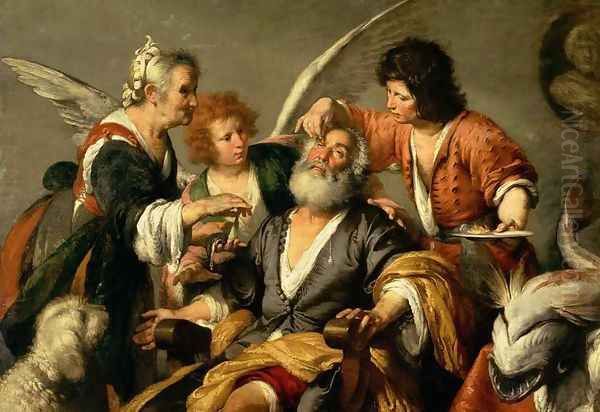
His Genoese masterpiece, The Cook, stands as a prime example of his interest in everyday life. More than just a depiction of a kitchen task, the painting elevates the subject through its monumental scale and rich execution. The detailed rendering of the plucked goose, the gleaming copper pots, and the various dead birds showcases Strozzi's skill as a still-life painter within a larger genre context. The figure of the cook herself is portrayed with a robust dignity, avoiding caricature and lending the scene a sense of earthy realism. This work reflects an interest in depicting common life that aligns with aspects of Caravaggism but is infused with a painterly richness derived from Flemish models.
Strozzi also painted pure still lifes, particularly flower pieces. Works like Still Life with Flowers in a Glass Vase and Fruit on a Ledge demonstrate his ability to capture the delicate textures of petals and leaves, the transparency of glass, and the varied surfaces of fruit. These compositions often feature a dramatic lighting and rich color palette characteristic of his broader style. While perhaps less numerous than his figurative works, his still lifes show his engagement with a genre that was gaining popularity across Europe and reveal his mastery in rendering inanimate objects with vibrancy and presence.
His genre scenes often carry allegorical or moralizing undertones, as might be expected from an artist with his religious background. Even seemingly straightforward depictions of musicians, like his Street Musicians, can be interpreted in light of contemporary ideas about harmony, transience, or social types. These works allowed Strozzi to explore different textures, character types, and compositional arrangements, enriching his overall artistic practice and demonstrating his connection to the wider currents of Baroque art beyond purely religious or aristocratic commissions.
Artistic Techniques and Characteristics
Bernardo Strozzi's enduring appeal lies significantly in his distinctive artistic techniques and stylistic characteristics, which evolved throughout his career but consistently displayed remarkable energy and mastery. His approach was fundamentally painterly, prioritizing color, texture, and expressive brushwork.
One of the hallmarks of his style, particularly in his mature Venetian phase, is his bold and visible brushwork. He often applied paint thickly, using techniques like impasto to build up textured surfaces that catch the light. This bravura handling of the brush gives his paintings a sense of immediacy and dynamism. The physical presence of the paint itself becomes part of the artwork's impact, conveying energy and emotion directly. This contrasts with the smoother, more polished finish favored by some contemporaries.
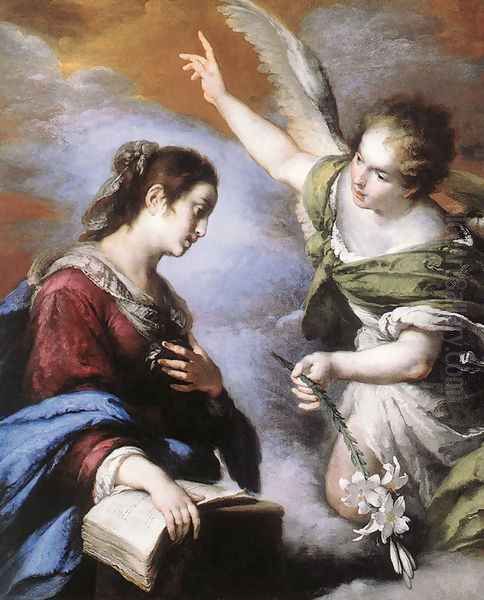
Color was paramount for Strozzi. While his early Genoese works employed the dramatic chiaroscuro associated with Caravaggio, his palette grew progressively richer and more luminous, especially after his move to Venice. He favored warm, vibrant hues – deep reds, golds, blues, and earthy tones – often juxtaposed for dramatic effect. His understanding of color relationships allowed him to create compositions that are both harmonious and visually exciting. He masterfully used color not just descriptively but also emotionally, enhancing the mood and narrative of his scenes.
Despite the freedom of his brushwork, Strozzi possessed a strong sense of form and structure. His figures have a tangible weight and volume, often imbued with a monumental quality, even in smaller canvases. He combined this underlying solidity with a Baroque sense of movement and energy. Draperies swirl, figures gesture dynamically, and compositions are often built along strong diagonals, creating a sense of vitality and engagement.
His ability to capture emotion was another key strength. Whether depicting religious ecstasy, the concentration of a musician, the dignity of a Doge, or the simple presence of a kitchen maid, Strozzi imbued his figures with psychological depth and convincing humanity. This emotional resonance, combined with his technical brilliance, makes his work compelling and accessible even centuries later. His unique synthesis of Genoese realism, Flemish richness, and Venetian color created a powerful and personal Baroque language.
Legacy and Influence
Bernardo Strozzi's impact on Italian Baroque painting was substantial, felt strongly in both Genoa and Venice. He served as a crucial link between different artistic traditions and played a significant role in shaping the trajectory of painting in both cities during the 17th century.
In Genoa, despite his relatively early departure, his powerful style left a lasting impression. His synthesis of Caravaggesque drama and Flemish painterliness influenced subsequent generations of Genoese artists. Figures like Valerio Castello and, to some extent, the later, more eccentric Alessandro Magnasco, inherited aspects of his dynamic brushwork and expressive intensity, even as Genoese painting continued to evolve its own distinct character.
His influence in Venice was arguably even more profound. Arriving at a time when the great wave of the High Renaissance had passed, Strozzi, along with Domenico Fetti and Johann Liss, injected vital new energy into the Venetian school. His rich color, bold technique, and emotional depth provided a powerful alternative to the prevailing styles and helped define the character of Venetian Baroque painting. He is often considered one of its principal founders.
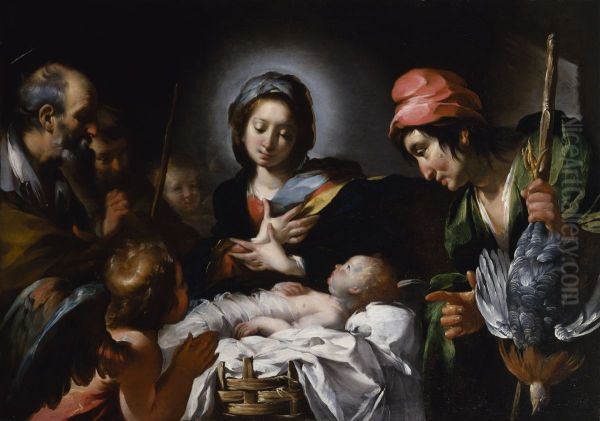
His work provided a crucial bridge between the 16th-century Venetian masters and the great decorative painters of the later Baroque and Rococo periods. Artists like Francesco Maffei directly show his influence in their energetic brushwork and dramatic compositions. Later masters such as Sebastiano Ricci and Giovanni Battista Piazzetta, while developing their own styles, operated within a Venetian tradition that Strozzi had helped to reshape and revitalize. Even the luminous art of Giovanni Battista Tiepolo owes a debt to the painterly freedom and vibrant colorism championed by Strozzi and his contemporaries.
Beyond Italy, Strozzi's works were collected and admired across Europe. His reputation endured, recognizing him as a master colorist and a painter of great emotional force. His unique position – straddling the religious and secular worlds, bridging Genoese and Venetian traditions, and synthesizing Italian and Northern European influences – makes him a fascinating and pivotal figure in the complex tapestry of Baroque art.
Rediscovery and Exhibitions
While Bernardo Strozzi remained a respected name among connoisseurs, his work, like that of many Baroque masters, experienced periods of lesser renown before enjoying renewed scholarly and public attention in the 20th and 21st centuries. Several key exhibitions have played a crucial role in reassessing his contribution and showcasing the quality and range of his art to a wider audience.
A landmark event was the exhibition "Genova nell'Età Barocca" (Genoa in the Baroque Age), held at the Palazzo Ducale in Genoa in 1992. This comprehensive survey of Genoese Baroque art prominently featured Strozzi, contextualizing his work within the rich artistic milieu of his native city and highlighting his pivotal role.
Following this, a major monographic exhibition dedicated solely to Strozzi was organized in the United States and Italy in 1995. Titled "Bernardo Strozzi: Master Painter of the Italian Baroque," it opened at the Walters Art Gallery in Baltimore before traveling to Genoa. This exhibition brought together a significant number of his most important paintings from collections worldwide, offering an unprecedented opportunity to study his development and appreciate the full scope of his achievement. It was accompanied by a scholarly catalogue that remains a fundamental resource for Strozzi studies.
More recently, Italian exhibitions have continued to explore his work. In 2019, the Palazzo Nicolosio Lomellino in Genoa hosted "Bernardo Strozzi (1581-1644). La conquista del colore" (Bernardo Strozzi: The Conquest of Color). This show focused specifically on his mastery of color and his Genoese roots, further illuminating his artistic journey.
Strozzi's paintings continue to be featured in thematic exhibitions exploring Baroque art, music and art connections, and the dialogue between Italian and Northern European painting. For instance, his works are included in the exhibition "Painting Music in the Age of Caravaggio and the Venetians," scheduled for 2024-2025 at the Kadriorg Art Museum in Tallinn, Estonia. These ongoing presentations ensure that Strozzi's vibrant art continues to engage and inspire audiences, reaffirming his status as a major figure of the Italian Baroque.
Conclusion
Bernardo Strozzi's life was as colorful and dynamic as his paintings. From the austerity of the Capuchin monastery to the bustling art markets of Genoa and Venice, his journey was marked by profound shifts and challenges. Yet, through it all, his artistic vision remained remarkably consistent in its pursuit of emotional truth, vibrant color, and energetic expression. He masterfully synthesized the dramatic realism of Caravaggio, the painterly richness of Rubens and Van Dyck, and the luminous colorism of the Venetian tradition, forging a style that was entirely his own.
As "Il Cappuccino" and "Il Prete Genovese," he navigated the complex intersection of faith and art, infusing his religious subjects with palpable humanity and his secular scenes with monumental dignity. His bold brushwork and rich palette revitalized painting in both Genoa and Venice, leaving a legacy that influenced generations of artists. Today, Bernardo Strozzi is recognized not just as a key figure of the Italian Baroque, but as a timeless master whose works continue to captivate with their raw energy, emotional depth, and sheer painterly brilliance. His conquest of color remains a testament to a life lived and art created with passion and conviction.